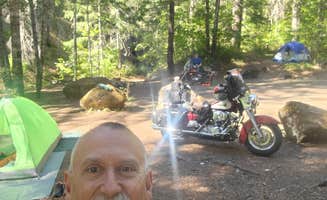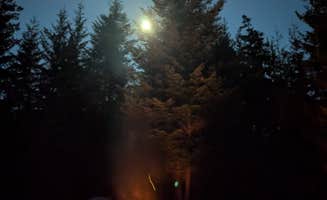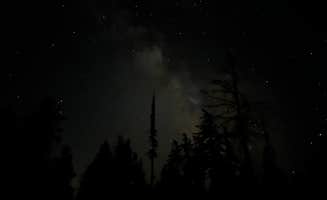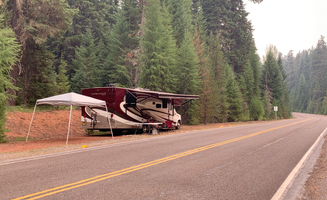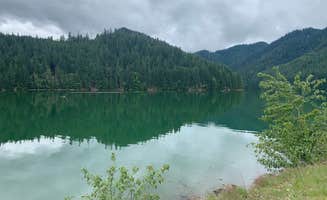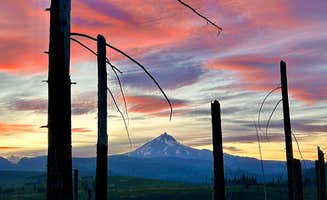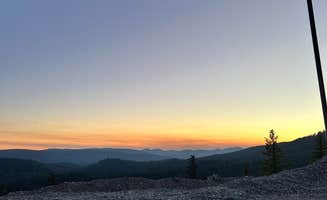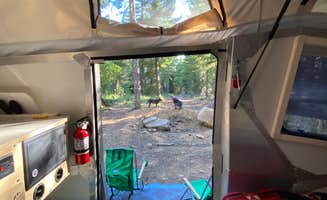Dispersed camping near Gates, Oregon occurs on public lands where elevations range from 1,200 to 3,500 feet, creating diverse camping environments from riverside flats to forested highlands. The camping season typically extends from April through October, with summer temperatures averaging 70-85°F during the day and 45-55°F at night. Forest roads in the area vary considerably in quality, with some requiring higher clearance vehicles particularly after spring rains.
What to do
Fishing opportunities: The Quartzville Recreation Corridor provides year-round fishing access along multiple pull-out sites. "Fishing is OK year round in the river at these spots," notes Mark W. about the Quartzville Recreation Corridor dispersed areas.
Swimming spots: Blue River Reservoir offers several swimming locations with varying accessibility. A visitor at Blue River Reservoir Roadside Camping shares, "Absolutely a beautiful spot tucked away! Off the main road with a few dispersed spots spaced out very nicely. Not the easiest access to the river but if able easy enough."
Wildlife observation: Early morning hours provide the best opportunities for spotting local wildlife. "We found a spot to put our tent a safe distance from the road and was able to watch and hear this clear blue river while we fell asleep," reports a camper about the natural setting.
Hiking connections: Several unmaintained trails connect camping areas to larger trail networks. At Alder Flat, "You are immediately ensconced in quiet and shade, an impossibly green and detailed large pond right off the bat, with a huge walkable log going right to the middle, and lots of interesting critters and a popurrí of different foliage up and down the trail."
What campers like
River proximity: Many campers appreciate sites with direct water access. One camper at Blue River Reservoir notes, "If you follow the road to the right of the reservoir there are some developed campsites/boat launches with a fee (and composting toilets). Keep driving. This area is freshly burned, but there are still very treed dispersed sites past the more developed ones."
Natural seclusion: Campsites offer varying levels of privacy from neighboring sites. At Timothy Lake Dispersed Camping, a visitor reported, "We had no neighbors on a busy weekend in June though. Would recommend for any trying to camp next to their car without reservations."
Stargazing conditions: Clear skies and minimal light pollution create excellent stargazing opportunities. "Absolutely a beautiful spot tucked away! Spots are large and the stars are amazing!" comments a camper at Blue River Reservoir.
Free access: No-cost camping appeals to budget-conscious outdoor enthusiasts. As one Alder Flat visitor puts it, "Free, quiet, and new. Show up whenever you feel like - it belongs to everyone. Just make sure you clean up after yourself!"
What you should know
Fire restrictions: Fire bans typically begin in July and extend through September. A Quartzville visitor warns, "But always follow the guide for the area about campfires. Such as August most times there are NO Camp Fires! Be prepare for fire danger, have axe, shovel and 5-gal of water."
Road conditions: Many access roads require high-clearance vehicles. At Whiskey Jack Dispersed Campsite, "It is just off of paved roads on a smooth gravel road that our RV easily handled - it is a pull off from Whiskey Jack road and has room for 1 RV or several tents on flat land with some soft ground cover from grass and pine needles."
Limited facilities: Most dispersed areas have no amenities. "There is no water up there besides the lake," notes a Mirror Lake visitor about water availability.
Cell service limitations: Connectivity becomes unreliable beyond certain points. A Quartzville visitor adds, "No phone cell service about mile marker 12 can get a little signal."
Crowding patterns: Popular sites fill quickly during summer weekends. "The first time we tried to camp here all the spots were full, so we don't always count on being able to get a spot. It's best to come up with a couple backup plans as this is a popular spot!" advises a Mirror Lake camper.
Tips for camping with families
Swimming instruction spots: Several locations offer safer swimming areas for children. "Awesome little cliff jumping swimming spot to teach the kids how to swim," shares a visitor at Britenbush River Dispersed.
Wildlife education: Morning and evening hours provide opportunities to observe local animals. One Blue River camper mentions, "Brought kids to this spot & they had a blast catching salamanders & scorpions (small non-lethal kind)."
Accessible campsites: Some sites require minimal hiking from parking areas. "Lots of open camping spots that you can drive into without even leaving asphalt. Short distance from Timothy Lake," notes a Timothy Lake camper.
Backup plans: Always have alternative camping locations identified. "The first time we tried to camp here all the spots were full, so we don't always count on being able to get a spot. It's best to come up with a couple backup plans," advises a Mirror Lake visitor.
Tips from RVers
Level parking spots: Many dispersed areas have limited level parking. A Whiskey Jack camper notes, "We picked the spot with fewer trees as we were testing out a Starlink satellite dish on our RV to see if we could get internet access deep in the woods."
Site access considerations: Most roads accommodate smaller RVs but present challenges for larger rigs. "Beautiful recitation area... Mostly roadside limited facilities and or services but beautiful area.. large mountain lake tucked into beautiful mountain valleys... windy narrow road a couple state campgrounds and day use areas... limited places to turn around... But well worth the adventure!" shares a Quartzville visitor.
Boondocking preparations: Come fully supplied for self-contained camping. "There are no services so this is dry camping and you'll need to be self sufficient," advises a Whiskey Jack visitor about free camping near Gates, Oregon.


